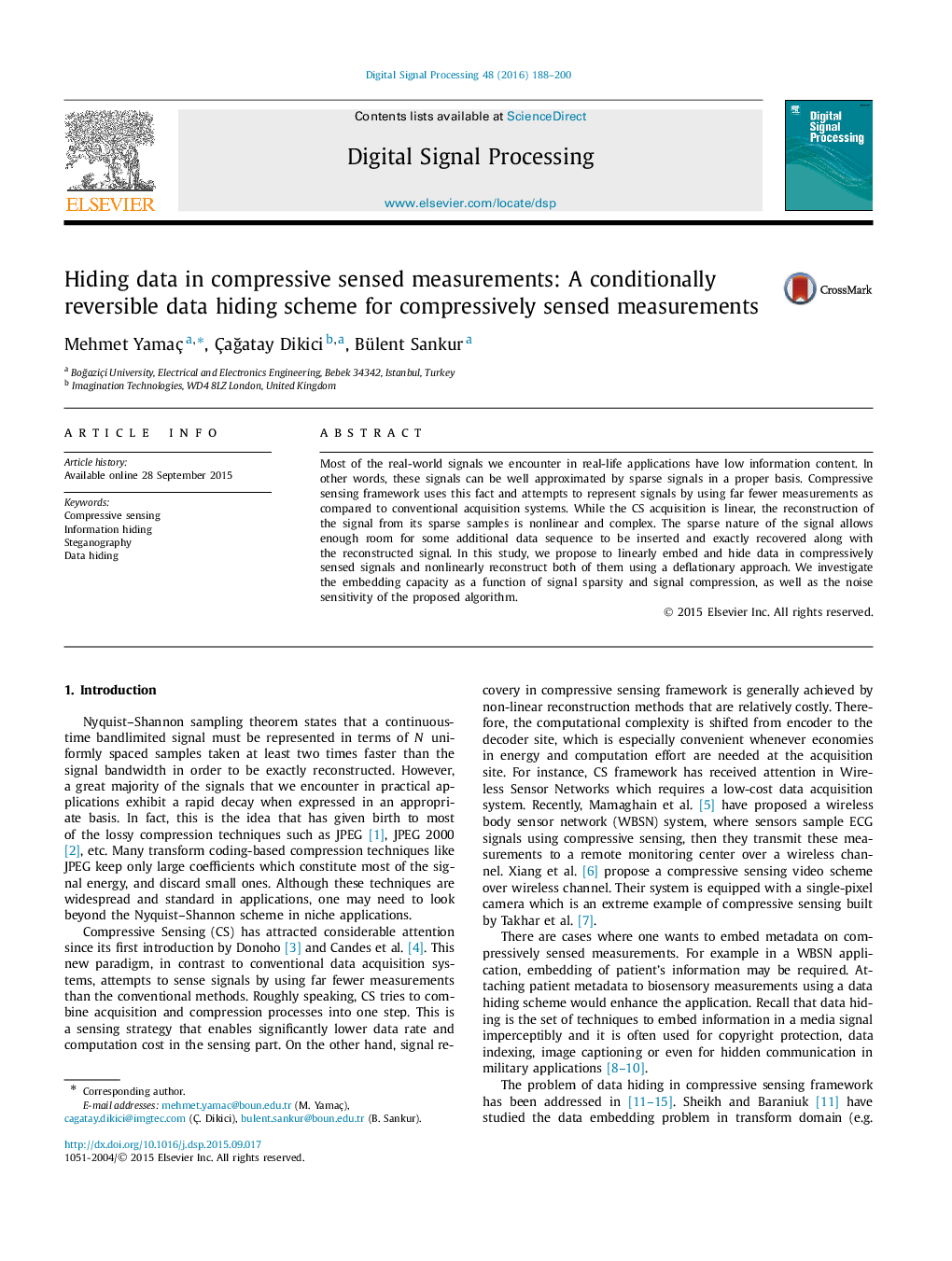| Article ID | Journal | Published Year | Pages | File Type |
|---|---|---|---|---|
| 6951996 | Digital Signal Processing | 2016 | 13 Pages |
Abstract
Most of the real-world signals we encounter in real-life applications have low information content. In other words, these signals can be well approximated by sparse signals in a proper basis. Compressive sensing framework uses this fact and attempts to represent signals by using far fewer measurements as compared to conventional acquisition systems. While the CS acquisition is linear, the reconstruction of the signal from its sparse samples is nonlinear and complex. The sparse nature of the signal allows enough room for some additional data sequence to be inserted and exactly recovered along with the reconstructed signal. In this study, we propose to linearly embed and hide data in compressively sensed signals and nonlinearly reconstruct both of them using a deflationary approach. We investigate the embedding capacity as a function of signal sparsity and signal compression, as well as the noise sensitivity of the proposed algorithm.
Related Topics
Physical Sciences and Engineering
Computer Science
Signal Processing
Authors
Mehmet Yamaç, ÃaÄatay Dikici, Bülent Sankur,
